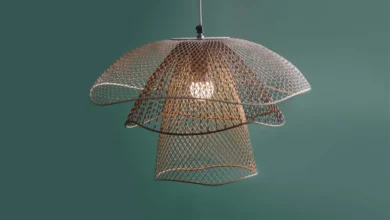The Ultimate Guide to Glazing: Types, Benefits, and Applications

Introduction
Glazing is an essential part of modern architecture and construction. Whether it is used in windows, doors, skylights, or facades, glazing plays a pivotal role in enhancing the aesthetic appeal, energy efficiency, and functionality of buildings. It refers to the installation of glass within a frame, and its types, benefits, and applications have evolved significantly over the years. In this article, we’ll explore everything you need to know about glazing, including its types, benefits, applications, and trends, making it a comprehensive guide for homeowners, architects, and builders alike.
What is Glazing?
Glazing is the process of fitting glass into windows, doors, or walls of a building. The term also refers to the glass itself, which can vary in thickness, coating, and treatment. The primary purpose of glazing is to allow natural light to enter while providing insulation and security to a structure. As construction materials have advanced, glazing has expanded beyond mere glass installation, with different types of glazing available for various functions, including thermal insulation, noise reduction, and enhanced durability.
Types of Glazing
The choice of glazing depends on the specific needs of the project. Here are some of the most common types:
1. Single Glazing
Single glazing is the simplest and most traditional form of glazing, involving a single pane of glass. It is still used in older buildings and certain regions, although it has largely been replaced by more energy-efficient options in modern construction.
Pros:
- Cost-effective
- Allows maximum light transmission
Cons:
- Poor thermal insulation
- Limited noise reduction
- Not energy-efficient
2. Double Glazing
Double glazing consists of two panes of glass separated by a layer of air or gas (typically argon). This type of glazing is popular in residential and commercial properties due to its improved insulation capabilities.
Pros:
- Enhanced thermal insulation
- Reduces energy costs
- Effective noise reduction
Cons:
- Higher upfront cost than single glazing
3. Triple Glazing
Triple glazing involves three panes of glass with two insulating layers in between. This type of glazing offers superior thermal performance, particularly in colder climates, making it a favorite for energy-conscious builders.
Pros:
- Maximum energy efficiency
- Excellent noise insulation
- Increased durability
Cons:
- Higher cost than double glazing
- Can result in reduced light transmission
4. Laminated Glazing
Laminated glazing involves two layers of glass bonded together with a plastic interlayer, typically polyvinyl butyral (PVB). This type of glazing is designed for added safety and security, as the interlayer holds the glass together even when shattered.
Pros:
- Enhanced security
- Impact-resistant
- Provides UV protection
Cons:
- More expensive than standard glazing
- Heavier, requiring stronger frames
5. Tempered Glazing
Tempered or toughened glass is heat-treated to improve its strength. It is designed to shatter into small, blunt pieces upon impact, minimizing the risk of injury.
Pros:
- High impact resistance
- Safety feature, reducing injury risk
- Used in commercial and public spaces
Cons:
- Higher cost than regular glass
- Cannot be cut or altered once tempered
6. Low-E Glazing
Low-E (low emissivity) glazing features a special coating that reflects infrared light, helping to keep heat inside a building in the winter and outside in the summer. This glazing option is ideal for improving energy efficiency.
Pros:
- Reduces heating and cooling costs
- Limits UV damage to furniture and fabrics
- Maintains comfort levels year-round
Cons:
- Higher cost than standard glazing
- Slightly reduced light transmission
Benefits of Glazing
The choice of glazing has a direct impact on various aspects of a building’s performance. Here are some of the top benefits that modern glazing offers:
1. Improved Energy Efficiency
One of the most significant benefits of double and triple glazing is improved energy efficiency. With effective insulation, heat transfer is minimized, helping to maintain comfortable indoor temperatures throughout the year. This leads to reduced heating and cooling costs, making glazing a long-term investment for homeowners and businesses.
2. Noise Reduction
Glazing, particularly double and triple glazing, provides excellent noise insulation. This is particularly beneficial in urban environments, where traffic and street noise can be disruptive. By reducing the transmission of sound waves, glazing ensures a more peaceful indoor environment.
3. Enhanced Security
Certain types of glazing, such as laminated and tempered glass, offer enhanced security by making it more difficult for intruders to break in. Laminated glass, for example, remains in place even if shattered, providing an additional layer of protection.
4. UV Protection
Some glazing options, such as laminated and Low-E glazing, provide UV protection by filtering harmful rays from the sun. This helps to prevent fading of furniture, flooring, and fabrics, preserving the interior aesthetics of a building.
5. Aesthetic Appeal
Glazing can greatly enhance the appearance of a building. Modern glazing options come in various tints, coatings, and finishes, allowing architects and designers to create striking, light-filled spaces that connect the indoors with the outdoors.
6. Sustainability
As sustainability becomes a priority in construction, glazing has evolved to meet these demands. Low-E and energy-efficient glazing reduce the carbon footprint of buildings by cutting down on the energy required for heating and cooling. Additionally, some types of glazing use recyclable materials, contributing to a greener construction process.
Applications of Glazing
Glazing is a versatile material used across a wide range of applications in both residential and commercial settings. Here are some of its common uses:
1. Windows
Windows are perhaps the most obvious application of glazing. Whether used in homes, offices, or public buildings, glazed windows offer light, views, and ventilation while protecting from the elements.
2. Doors
Glazed doors, such as patio doors or sliding doors, are a popular choice for residential properties. They create a seamless connection between indoor and outdoor spaces while allowing natural light to flood into rooms.
3. Skylights
Glazed skylights are an excellent way to introduce natural light into spaces that may not have access to traditional windows. They are particularly popular in commercial settings, such as malls and offices, as well as in modern homes.
4. Curtain Walls
In high-rise buildings and modern architecture, glazed curtain walls are used to create expansive, visually appealing facades. These walls provide thermal insulation while offering panoramic views.
5. Partitions
In office environments, glazed partitions create a balance between openness and privacy. They allow light to flow through different spaces while creating quiet, private areas for work or meetings.
Trends in Glazing
As building technologies advance, so do trends in glazing. Some of the most prominent trends in 2024 and beyond include:
1. Smart Glass
Smart glass, also known as switchable glazing, allows users to control the transparency or opacity of the glass through electrical signals. This technology provides privacy, glare control, and energy efficiency, making it increasingly popular in modern offices and homes.
2. Energy-Efficient Glazing
With a global push towards energy efficiency and sustainability, there is a growing demand for Low-E and triple glazing. These options help to minimize energy consumption while maintaining comfort in residential and commercial buildings.
3. Large Glass Panels
Architects and designers are increasingly using large glass panels in homes and commercial buildings to create open, light-filled spaces. This trend enhances the visual connection between indoor and outdoor environments, particularly in luxury properties.
Conclusion
Glazing is more than just a functional element in buildings—it is a critical component that enhances energy efficiency, security, aesthetics, and comfort. From single glazing to advanced Low-E and smart glass technologies, the variety of options available today can meet the needs of any project, whether it’s a residential home, a high-rise office, or a public building.
By understanding the types, benefits, and applications of glazing, you can make informed decisions that will not only improve the performance of your building but also contribute to a more sustainable future. Whether you’re a homeowner looking to upgrade your windows or an architect designing the next iconic skyscraper, glazing will remain a key consideration in construction for years to come.





